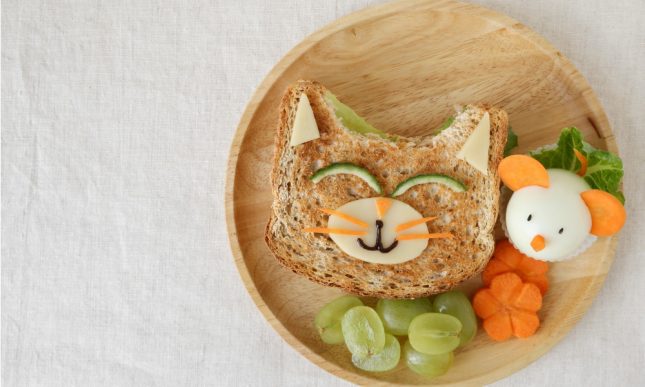Many parents are stuck in an ever repeating cycle of foods that their child comfortably eats. Over time repetitive menus become boring and our child loses enthusiasm for eating altogether. Children become used to only eating favourites and this makes branching out more challenging. Here’s 5 strategies to try when your child won’t eat dinner.
Parents are frequently wanting to add variety but stuck as to how to do this without resistance. A lengthy battle over food at the end of a long day, especially if we’ve spent considerable time cooking, is not what any of us needs.
But changing the foods we eat can be hard. Psychology Today suggests it’s because food is key to our survival, so it represents safety. And if someone starts messing around with our food, whether real or perceived, it can evoke fear.
The paradox is: the longer we serve only certain foods, the more difficult it is to add new items to your child’s menu, so the harder it can be to make a change.
Let’s look at five recognised strategies for supporting our child to gently add new foods to their repertoire.
5 Strategies for When Your Child Won’t Eat Dinner
1. Model pleasurable eating each day with a family meal
Food is about family and joy and traditions. Anchoring each day with a family meal, models eating variety and eating it pleasurably for our child. It is far more effective to follow an example than be told to do something.
In busy lives this may not be everyone and it may not be every day, although a family meal is one child and one adult so it’s something we can often plan into our week.
Away from home, having adult role models sitting with children as they eat can be supportive of more competent eating.
2. Increase eating confidence with food familiarity
Eating confidence is often about comfort level. We don’t willingly eat something that is not familiar.
Learning to eat new foods starts with building that comfort level around them. To do this we must become familiar with the look, the feel and the smell. The best way to achieve this is by having food served consistently.
There are many education centres where this is done really well and the majority of the children are able to eat confidently.
3. Believe that your child will become a good eater
The power of a parent’s belief isn’t something that’s widely spoken about. But I have seen first hand how powerful this can be, either positively or negatively. Eating is often spoken about and approached differently to, for example, reading.
We would never say ‘my child just isn’t any good at reading’ but we frequently hear ‘my child is a picky eater’. This is in effect, stating that they are not ‘good’ eaters.
It’s also very easy to inadvertently stymie progress.
“Oh, don’t bother putting olives on her plate, she’ll never eat them” becomes a self-fulfilling prophecy. Children are looking to caregivers to understand what can be good, what to trust and how to behave. If we have every confidence they can do something, over time, this gives them the confidence they can too.
Our unwavering faith in them to achieve, builds their own 3self-belief.
4. It has to be served on the plate, to be eaten!
Serving what we want eaten is a critical part of expanding the variety of foods that a child eats. If it’s not on the plate it can’t get eaten! I speak to many parents who wish their children ate more veges. But they don’t serve any veges, as the veges don’t get eaten… A self-fulfilling situation!
To build confidence in a food the best results are when we are prepared to serve it, do it consistently and do it with confidence.
This doesn’t mean wasting lots of food either. If it’s part of the communal serving then it gets eaten even if our child doesn’t partake. If we are serving something specifically for a child tiny quantities are always the best. Less overwhelming, more manageable and minimal wastage.
5. Making small, but consistent, changes
Accepting change is super important. If we are unable to accept a change, then new is far more likely to be out of our reach. Change is often a challenge for us, as we become very comfortable in our routines. Habits around food are frequently incredibly difficult to vary.
Even with the most selective of eaters it’s important to make small changes to foods. This doesn’t have to be difficult, in fact it can be a lot of fun. A good starting point is varying the presentation of a food. A sandwich can be cut into different shapes, a carrot can be wheels instead of batons, we can use peanut butter as a dip instead of a spread.
New is predicated on the ability to accept change so it’s essential that we don’t fall into the habit of continually doing things in exactly the same way. This can also, inadvertently increase the rigidity of approach to food for a child. If a sandwich is always prepared, cut and offered in the same way, for some children this becomes the only acceptable way for it to be served.
Varying presentation is an easy place to start, and from there we can begin to make small changes to the foods that we serve.
The more hesitant the eater, the tinier the changes.
Consistently varying the foods that a child eats enables them to, over time, take steps in a new direction. These steps lead to a slightly different selection of foods accepted. They also prepare a child to accept new foods more comfortably.
Adding variety for a child can be very challenging, but the most important component for long-term success is us, as the parent or caregiver.
For more expert advice on healthy eating, check out our Food and nutrition section.






